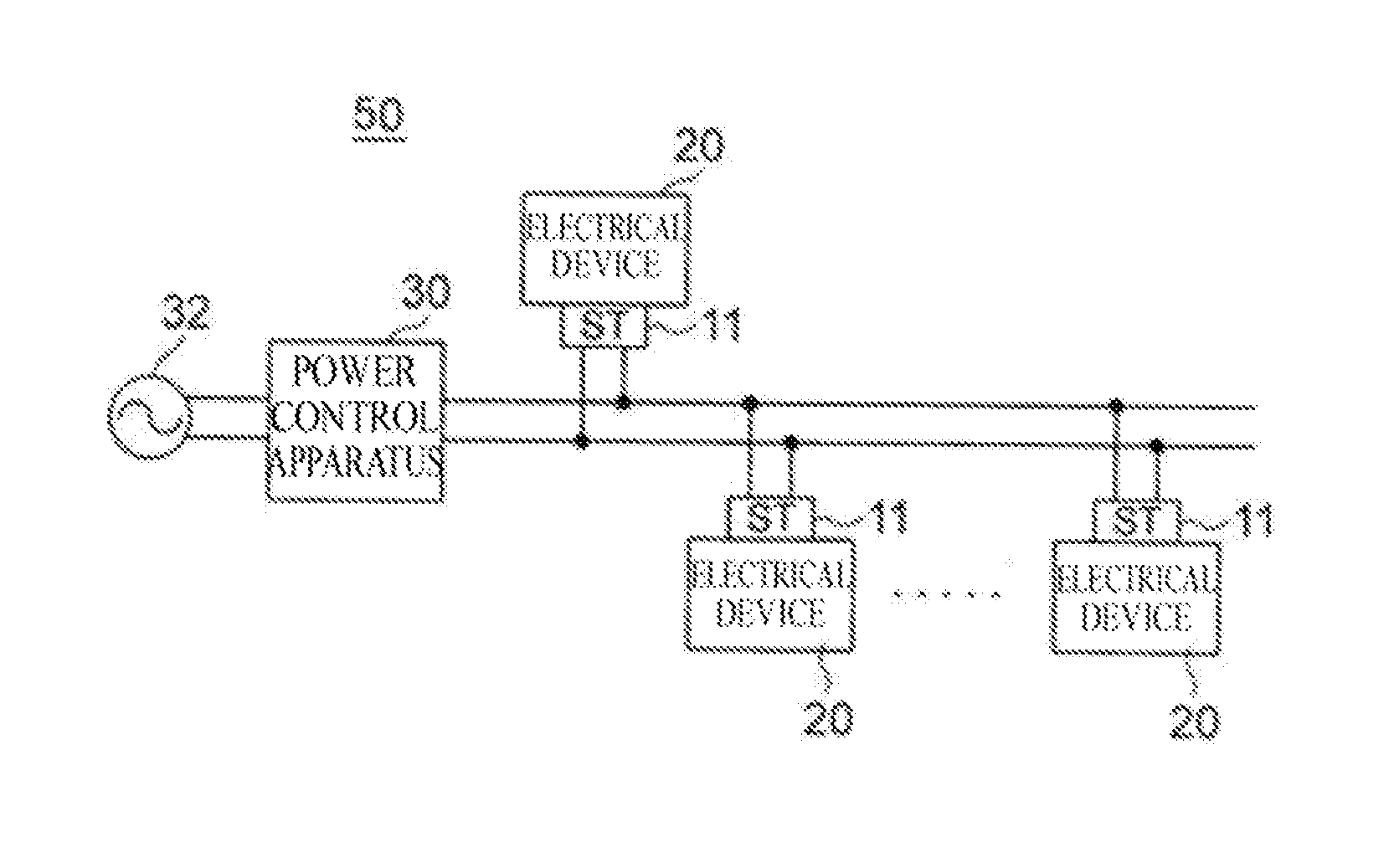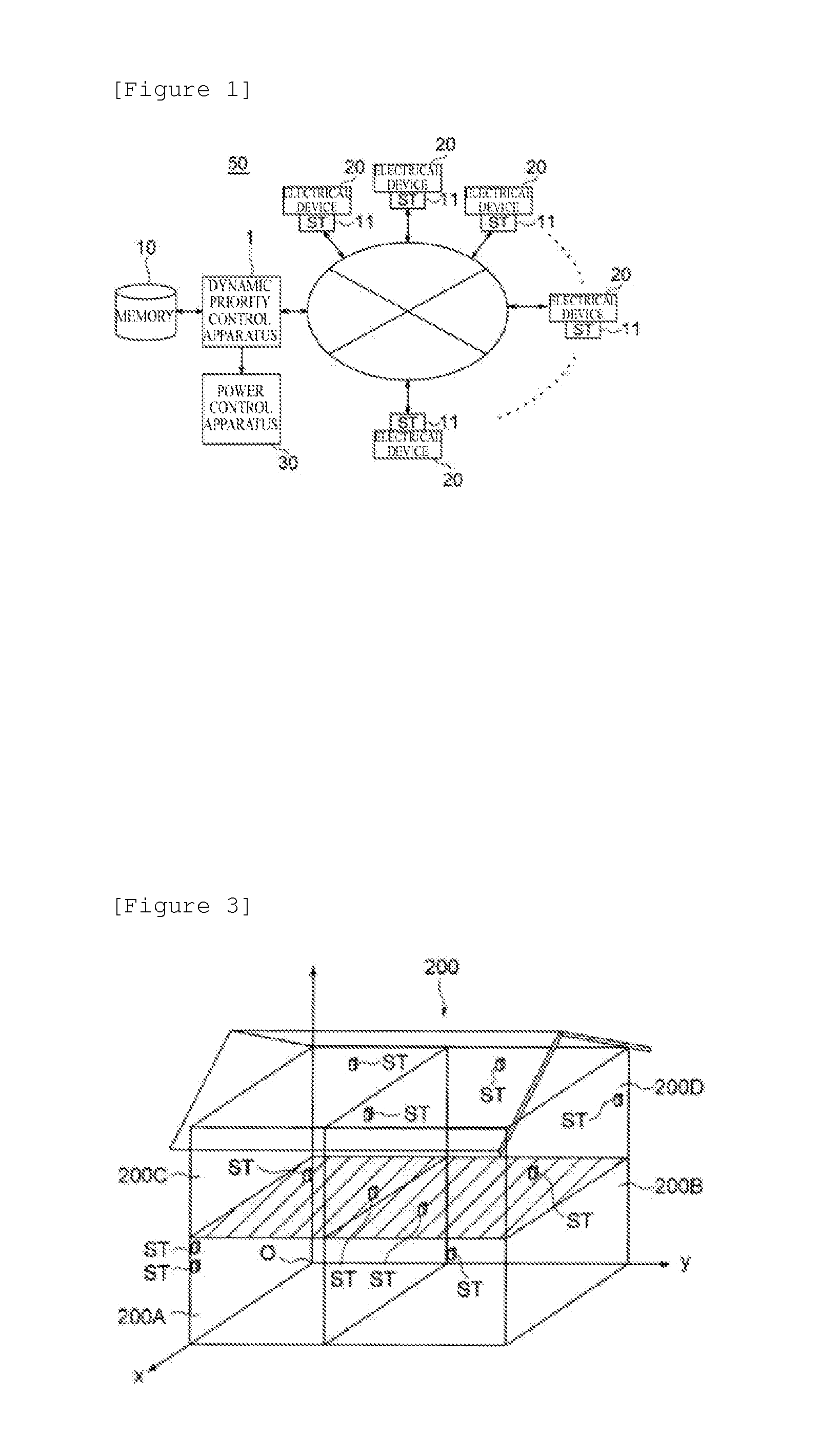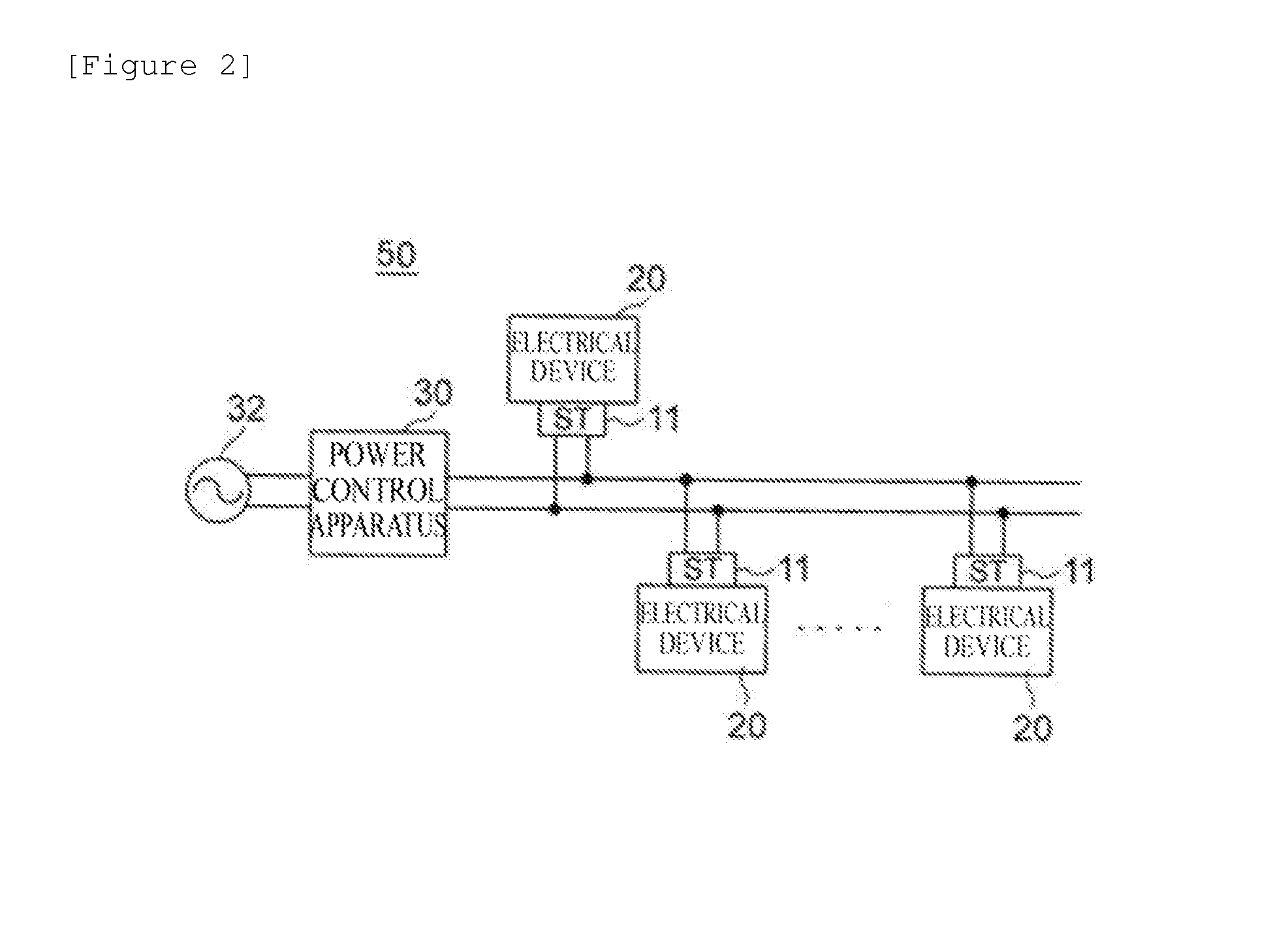On-demand power control system, on-demand power control system program, and computer-readable recording medium recording the same program
- Summary
- Abstract
- Description
- Claims
- Application Information
AI Technical Summary
Benefits of technology
Problems solved by technology
Method used
Image
Examples
first embodiment
[0131]FIG. 8 is a functional block diagram of a first embodiment showing functions of a priority apparatus shown in FIG. 1.
[0132]Reference numeral 1 in FIG. 8 denotes a priority apparatus; 10, a memory; and 11, an ST. The priority apparatus is composed of initial target value updating means 120 and power arbitration means 122. Reference characters (1) denote consumed power transmitted from the ST. As preprocessing, the priority apparatus converts the consumed power to a power use plan which determines used power for a minimum control interval τ and stores the power use plan, instantaneous power of an initial target value, and maximum instantaneous power in a memory 10, before the priority apparatus is activated. Reference characters (2) denote a power request message transmitted from the ST. The power request message is transmitted to the power arbitration means 122.
[0133]The initial target value updating means 120 has a function of allocating a difference between instantaneous powe...
second embodiment
[0178]The above-described dynamic priority control apparatus 1 can finally control instantaneous power to (or to below) maximum instantaneous power and perform control so as to maintain integral power consumption within the upper limit C (Wh). However, an unexpected increase in instantaneous power may occur due to, e.g., a load change during use of a device, and instantaneous power may exceed the maximum instantaneous power. A second embodiment for coping with such a case will be described.
[0179]FIG. 16 is a functional block diagram of the second embodiment.
[0180]A priority apparatus is composed of initial target value updating means 120, power arbitration means 122, and continuous monitoring means 124.
[0181]The initial target value updating means 120 and power arbitration means 122 have the same functions as the means described above, and a description thereof will be omitted.
[0182]The continuous monitoring means 124 monitors consumed power at all times. If the overall consumed pow...
PUM
 Login to View More
Login to View More Abstract
Description
Claims
Application Information
 Login to View More
Login to View More - R&D
- Intellectual Property
- Life Sciences
- Materials
- Tech Scout
- Unparalleled Data Quality
- Higher Quality Content
- 60% Fewer Hallucinations
Browse by: Latest US Patents, China's latest patents, Technical Efficacy Thesaurus, Application Domain, Technology Topic, Popular Technical Reports.
© 2025 PatSnap. All rights reserved.Legal|Privacy policy|Modern Slavery Act Transparency Statement|Sitemap|About US| Contact US: help@patsnap.com



